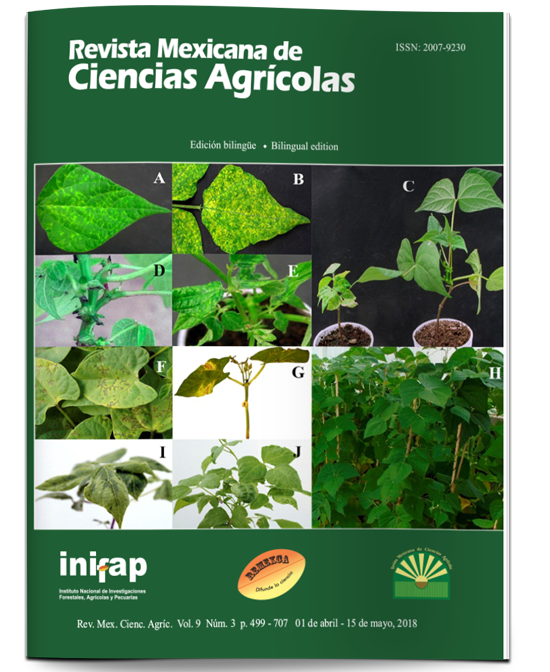Characteristics and productivity of a MAC plant, Agave tequilana developed with fertigation in Tamaulipas, Mexico
DOI:
https://doi.org/10.29312/remexca.v9i3.1214Keywords:
biomass production, drip irrigation, MAC, reducing sugarsAbstract
In the cultivation of Agave tequilana, the studies have been restricted to a part of its long cycle and to short periods of time, for this reason, with the objective of evaluating the agronomic characteristics in plant and pineapple in a complete cycle of the plant, they established suckers from Jalisco in the south of Tamaulipas in three conditions: a) in temporary and without fertilizer (TA); b) fertigation, in addition to precipitation, received water and nutrients (N, P, K, Ca, Mg, and micronutrients) through a drip irrigation system; and c) FB+fertigation, in addition to the above, these plants received basic fertilization (FB), with N, P, K and micronutrients, each treatment had three repetitions. Eight destructive evaluations were carried out using one plant per experimental unit, September 2004, February 2005, October 2005, 2006, 2007, 2008, 2009 and 2010. The plants developed with fertigation and fb+fertigation, on average exceeded 26% and 57% the height and number of leaves of plants of the TA, respectively; the highest annual production of dry matter (MS) was 51.8 t ha-1, estimating a total biomass per plant of 491.4 and 456.1 t ha-1 and 218.1 and 252.4 t ha-1 in the pineapple, respectively. In TA plants the total biomass was 97 t ha-1 and a pineapple yield of 46.5 t ha-1. In pineapple the sugars evaluated in oBrix and total reducing sugars (ART) were not affected by the treatments. The concentration of ART in the pineapple fluctuated between 26.8 and 29%. The concentration of glucose and fructose was similar in early stages of pineapple development; however, at the end of the cycle during the maximum growth stage the mean value in the fructose concentration was 246.8 g per kg MS of pineapple and represented 88% of the two soluble monosaccharides evaluated, the glucose presented an inverse behavior and represented the remaining 12%.
Downloads
Published
How to Cite
Issue
Section
License
The authors who publish in Revista Mexicana de Ciencias Agrícolas accept the following conditions:
In accordance with copyright laws, Revista Mexicana de Ciencias Agrícolas recognizes and respects the authors’ moral right and ownership of property rights which will be transferred to the journal for dissemination in open access. Invariably, all the authors have to sign a letter of transfer of property rights and of originality of the article to Instituto Nacional de Investigaciones Forestales, Agrícolas y Pecuarias (INIFAP) [National Institute of Forestry, Agricultural and Livestock Research]. The author(s) must pay a fee for the reception of articles before proceeding to editorial review.
All the texts published by Revista Mexicana de Ciencias Agrícolas —with no exception— are distributed under a Creative Commons License Attribution-NonCommercial 4.0 International (CC BY-NC 4.0), which allows third parties to use the publication as long as the work’s authorship and its first publication in this journal are mentioned.
The author(s) can enter into independent and additional contractual agreements for the nonexclusive distribution of the version of the article published in Revista Mexicana de Ciencias Agrícolas (for example include it into an institutional repository or publish it in a book) as long as it is clearly and explicitly indicated that the work was published for the first time in Revista Mexicana de Ciencias Agrícolas.
For all the above, the authors shall send the Letter-transfer of Property Rights for the first publication duly filled in and signed by the author(s). This form must be sent as a PDF file to: revista_atm@yahoo.com.mx; cienciasagricola@inifap.gob.mx; remexca2017@gmail.
This work is licensed under a Creative Commons Attribution-Noncommercial 4.0 International license.



